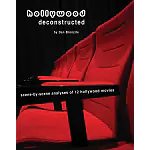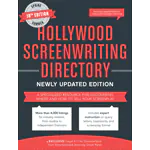Screenwriters, novice and pro, will inevitably have their own contrasting methodologies for writing a screenplay and you will often hear conflicting rules to adhere to from prominent screenwriting gurus on how to write a script.
So what is the best way to write your movie?
Should you plan every minute detail or simply unlock your mind to a cinematic stream of consciousness and go with the flow?
Well, I would suggest the answer is both!
When I first started out as a screenwriter I would get an idea for a story or sometimes simply the opening scene, a great ending or even a cool set-piece somewhere in the middle of act two and then jump into the script. I wouldn’t even use a computer but instead write it all down with a pen on a lined pad. In fact, I wrote my first ever script that way and it was optioned and while it never got produced it did prove to be a great writing sample and clinched my first spec sale and multiple assignments.
Since my first script I have written many without a coherent plan and many with a fully-structured outline – so what have I learned from the experience? Well, “free-form” script writing typically means many more rewrites because these scripts inevitably need a lot of editing to cut out the flab, and a lot more scene shuffling, because the scene to scene plot progression and character development was not planned at the beginning. And with the outlined projects? They of course still require rewrites, but much fewer and the central storyline and character journeys in these screenplays were always much clearer from the start which meant that theme could be expressed through dialogue, action and visuals more instinctively.
With all these lessons learned, and after many development meetings where I had to present my ideas for rewrites, I ultimately invented my own screenwriting software Movie Outline specifically for screenwriters to outline a story before diving head first into a screenplay. I discovered that free-form screenplay writing without following a proper structure sometimes pays off, and other times it doesn’t. I also learned that you can still free-form your script during the story planning stage and the scene writing stage and it’s just as satisfying and rewarding.
Outlining and structuring my story is now instinctual for me as a screenwriter and it has made me a better writer. It has also made developing a script with producers, directors and executives a much easier process, especially when you are trying to communicate your ideas for project changes. So now, even if I get a great idea for a movie and want to start writing I don’t immediately leap into the script, I let the idea gestate and then start planning the story. Sometimes I may write a scene if I have to get it out of my head and then plot where that scene can take me but I’ve managed to strike a balance between creativity and methodology and this is the key.. for me.
My advice for first-time screenwriters who are about to launch into their first screenplay is try to find your own balance between free-form writing and a structured approach. I do recommend outlining your story first but try not to initially get too caught up on the “three-act” blueprint, any particular structural paradigm or too much detail. Allow your story and ideas to flow and then go back to what you’ve written and change it around if necessary. Cut scenes out, combine scenes, clearly define your act breaks and don’t let formulas hinder your creative juices on the first pass.
This initial process helps you discover your own voice and style, and trust me, it’s better to write something crap on a blank page rather than stare at it all day or plan, plan, plan – sometimes used as an excuse by writers to procrastinate. As you become more accustomed to the screenwriting process, outlining and structuring will become second nature and crucially you will be able identify flaws in your script during the planning stage rather than waiting for someone to point it out to you at the end.





Dave
Working on my finalizing my first screenplay. I’ve been congratulated on my ability to evoke emotion and hold reader interest on an original story idea, but the criticism has been my structure. I write with a solid 3 Act structure (complete with defined turning points and midpoints) with the exception that my Protagonist’s midpoint does not intersect my Antagonist’s midpoint at the same place. To clarify, the protagonist’s midpoint occurs in line with a character who serves as a major obstacle, but is not the antagonist (although one could make a case for him being the antagonist). I was told that the hero and nemesis MUST have aligning midpoints yet I can’t find any resource that suggests this. I was told I have a great idea, but no Producer worth their salt would pay money for a story structured as mine is. Anyhow, what I’m getting at is… at what point does structure potentially kill a great story? The critique came from a script consultant/producer who believes the “Save the Cat” method is the absolute bible to structure. I’m really confused by the feedback because I know that a midpoint should illustrate a point of no return, or a major change, etc… but must it also precisely reflect the nemesis’ goal as well?